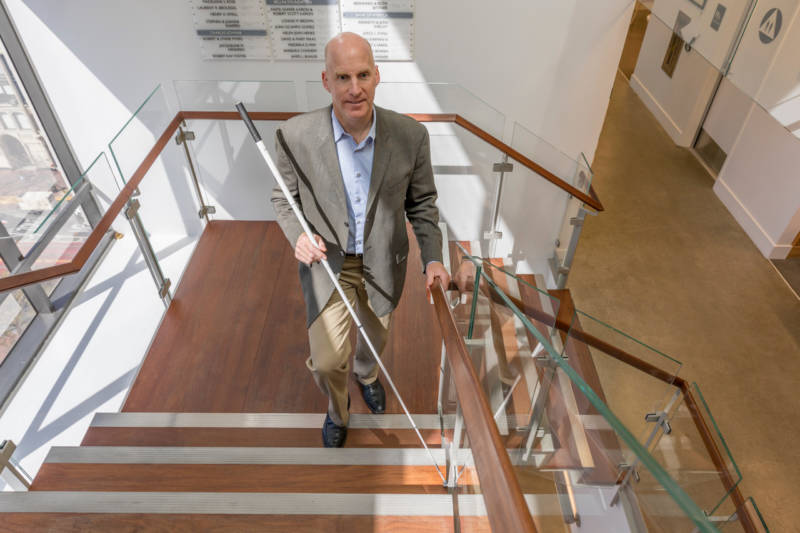Can you think of a building you like, not because of how it looks but because of how it sounds? Chris Downey can list many. He’s an Oakland-based architect who prioritizes sound.
Downey has been an architect for 30 years. Like most people in the business, Downey spent most of his career concerned about what the spaces he designed looked like. Then 10 years ago, as the result of brain surgery, he abruptly went blind. Now he pays more attention to how buildings sound and how it feels to be in them.
To do his work, Downey prints embossed building plans. All the details of the structure are raised off the page, so he can feel the building — things like the walls, stairways, and rooms. Instead of taking in the whole building all at once through his eyes, he experiences each detail individually through his fingers.
"What’s different, I’m thinking with my fingertip," Downey says. "I imagine being there. And I’m thinking about what it sounds like as I move through the space."
A building’s acoustics are important for the sighted, too, even if they don’t always realize it. Poor sound design can make anyone disoriented, feel anxious, or struggle to have a conversation. Done thoughtfully, it can encourage people to come together and talk. A well sound-designed building makes you want to be in the space, and you may find yourself even actively listening to it.

